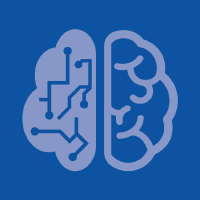Topic Menu
► Topic MenuTopic Editors


Complex Data Analytics and Computing with Real-World Applications
Topic Information
Dear Colleagues,
In today’s data-centric world, there is a host of buzzwords appearing everywhere in digital and print media. We encounter data in every walk of life, and the information they contain can be used to improve the wellbeing of society, business, health, and medicine. This presents substantial opportunities and challenges for analytically and objectively minded researchers. Extracting meaningful information from data is not an easy task. The rapid growth in the size and scope of datasets in a host of disciplines has created the need for innovative analytic strategies for analyzing and visualizing such data.
The rise of ‘Big Data’ will deepen our understanding of complex structured and unstructured data. Undoubtedly, comprehensive analysis of Big Data in real-world applications calls for analytically rigorous methods. Various methods have been developed to accommodate complex high-dimensional features to examine data patterns, variable relationships, prediction, and recommendation. Meanwhile, statistical theories have also correspondingly been developed.
The analysis of Big Data in real-world applications has drawn much attention from researchers worldwide. This Topic aims to provide a platform for the deep discussion of novel analytic methods developed for Big Data in applied areas. Both applied and theoretical contributions to these areas will be showcased.
The contributions to this Topic will present new and original research in analytic methods and novel applications. Contributions can have either an applied or theoretical perspective and emphasize different problems, with special emphasis on data analytics and statistical methodology. Manuscripts summarizing the most recent state of the art on these topics are welcome.
Prof. Dr. S. Ejaz Ahmed
Prof. Dr. Shuangge Steven Ma
Prof. Dr. Peter X.K. Song
Topic Editors
Keywords
- algorithm
- data science
- statistical learning
- machine learning
- novel applications
- new conceptual frameworks of estimation
- large-scale structured data
- unstructured data
Participating Journals
| Journal Name | Impact Factor | CiteScore | Launched Year | First Decision (median) | APC |
|---|---|---|---|---|---|

Entropy
|
2.7 | 4.7 | 1999 | 20.8 Days | CHF 2600 |

Algorithms
|
2.3 | 3.7 | 2008 | 15 Days | CHF 1600 |

Big Data and Cognitive Computing
|
3.7 | 4.9 | 2017 | 18.2 Days | CHF 1800 |

Data
|
2.6 | 4.6 | 2016 | 22 Days | CHF 1600 |

MDPI Topics is cooperating with Preprints.org and has built a direct connection between MDPI journals and Preprints.org. Authors are encouraged to enjoy the benefits by posting a preprint at Preprints.org prior to publication:
- Immediately share your ideas ahead of publication and establish your research priority;
- Protect your idea from being stolen with this time-stamped preprint article;
- Enhance the exposure and impact of your research;
- Receive feedback from your peers in advance;
- Have it indexed in Web of Science (Preprint Citation Index), Google Scholar, Crossref, SHARE, PrePubMed, Scilit and Europe PMC.

